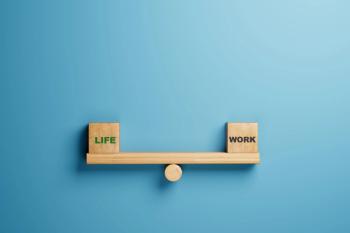
Work-Life Balance Obstacles: Be Smart with Your Medical Charts
Here are 10 tips to improve documentation at your medical practice to get you out of the office and back home to spend time with your family.
One of my readers inquired how long it should take for a physician to close a chart. I decided to address this issue in this week’s and next week’s blog.
One of the greatest threats to work-life balance is spread - spread of work into every moment of your life. No one likes working on charts after the kids are in bed or bright and early on a Sunday morning. I’ve observed that the longer from the visit I am, the longer it takes me to work on the chart. I look at a long list of notes and don’t even want to get started. I guess the answer to the original question is the chart should be closed before the quality of the note will suffer because of a delay in documenting the visit. So how do you get the documentation done?
Here are some ways I’ve found that make it less likely I’ll be staring at a virtual pile of charts at 10:30 at night.
1. Enlist a coach or cheerleader. I ask my medical assistant to help “remind” me to close my charts. She gives me a thumbs-up on the days when I’ve closed all my morning charts by lunchtime and asks me what’s happening on the days I can’t seem to close a single chart.
2. Type while the patient is talking …most of the time. If you have to hand the patient a tissue with one hand while still typing with the other, it’s probably a good indication that you need to stop typing. But, most of the time, I can type while the patient is talking, capturing the HPI in the patient’s own words.
3. Commit to doing it after each patient. I’ve found that I’m more careful with my patients’ time than my own. So, if it is lunchtime and I have a chart to finish, I’ll procrastinate, find something to look at on my desk or the Internet, etc. If I need to close a note while the next patient is waiting for me, I’m more focused.
4. Double duty A/P and patient instructions. In our EHR, you can copy and paste from one section to another - if you can summarize the care plan well, you can make it do double duty.
5. Use smartphrases/technological tools. Whatever your EHR can do to make documentation easier, use it. If you don’t have an EHR, this is where check sheets and pre-printed forms help streamline documentation.
6. Try a laptop or tablet. This may help you to move seamlessly between rooms or get work done in the hallway or nurse’s station between patients.
7. Have your medical assistant enter meaningful information. This can include the medication list, a review of systems, or focused questions. The better your instructions, the better she will document for you.
8. Review the patient’s chart ahead of time. This has got to be one of the ways I multiply time. For two minutes of perusing a chart, I can save 20 minutes trying to reconstruct a complicated history.
9. E-mail your spouse an estimated time of arrival (ETA) and stick to it. This is how my husband and I work best - maybe for you it’s a call or text message. When I say I’m leaving by 5:30 p.m., it helps to know I’ll be held accountable.
10. Steal shamelessly from people who do it well. Whoever the superstar is in your clinic or practice that gets notes done quickly, ask him how he does it and apply whatever you can to your own work style.
Find out more about Jennifer Frank and our other
Newsletter
Optimize your practice with the Physicians Practice newsletter, offering management pearls, leadership tips, and business strategies tailored for practice administrators and physicians of any specialty.








